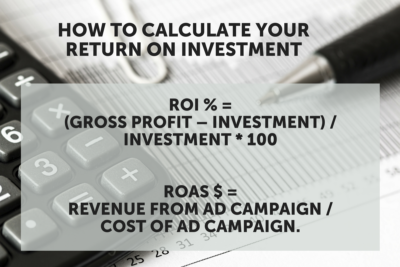
A digital marketing primer: Travel affiliates 101
By cameron in Uncategorized
This is a viewpoint from Zane McIntyre, CEO and Co-Founder of Commission Factory.
With $533.52 billion spent on online travel sites in 2015, there is a strong incentive for travel bloggers to become a travel affiliate. And these networks can be massive. For example, Kayak has built a massive business that does hundreds of millions in revenue.
Of course, building a site like Kayak would be far beyond the scope of the average affiliate marketer. Even so, there’s enormous potential for this segment of the industry to grow further.
What is affiliate marketing?
Affiliate marketing is a relationship between an “influencer” (blogger, website publisher) and a company that sells goods or services.
Visitors come to a blog about a particular subject. The blog has banner ads, sidebar ads, or in-text links to goods and services that relate to the blog topic.
When the website visitor clicks the link to the ad, travels to that company’s website, and/or makes a purchase, a commission is paid to the originating website.
A purchase may not be necessary in order for the blogger to receive a commission. Within the affiliate marketing contract, many different actions can earn commissions.
What are the different types of affiliate marketing?
Each relationship between the blogger and the affiliate company is different. However, there are several general types of affiliate marketing:
Pay-per-click (PPC) is the most passive form of affiliate marketing. Display advertising is included in this: banner ads, sidebar ads. Every time those ads are clicked by a site visitor, the site owner receives a commission.
PPC is a numbers game: the more traffic, the more chances that visitors will click an ad. The amount of money received per click depends on the service used. For example, Google AdSense is based on bidding while other platforms may pay up to $1 per click.
Pay-per-performance (PPP) involves more effort on the part of the blog visitor. When the visitor clicks the link, a commission is only earned by the originating blog when a purchase is made. Commission on this is paid as a percentage of the sale.
Pay-per-sale (PPS) is exactly like PPP, except that the commission is a flat rate per sale. Again, the commission is only earned if someone purchases from the advertising website after reaching it through the original blog.
Pay-per-lead (PPL) works much in the same manner as PPP, but a purchase is not necessary. The visitor still must complete an action (typically filling out a form, submitting an email address, or entering into a contest using some personal contact information) in order for the commission to be paid. This is typically a flat rate, as well.
Tier 2 is a little more complicated than the straight “click this, get paid” types of affiliate marketing mentioned above. This next tier is more of a referral program in which the original blogger will get paid every time they refer someone to an affiliate program.
Sound complicated? It doesn’t have to be. Just bear in mind that the PPP (pay per performance) affiliate marketing is the most commonly used in travel.
Where do you find travel affiliates?
There are three ways that you can earn affiliate commissions, and each of these three platforms is free to the blogger:
Affiliate networks are an intermediary between the individual blogger and the paying merchant. When you join one of these, your traffic and payout are all managed in one location, and the amount of self-promoting that you’ll have to do to have a relationship with the merchants is non-existent.
It is the easiest and most passive method of receiving affiliate commissions. There is a comprehensive chart here: https://en.wikipedia.org/wiki/Advertising_network
Merchant affiliate programs allow the individual website publisher to join a merchant’s list of affiliate bloggers. You receive commission from the merchant, but you will have to go directly to each advertiser that you wish to feature on your blog.
Typically, the commission rate you receive remains the same whether you go directly through to the merchant, or through an affiliate network. Sometimes, if the merchant is not part of a specific affiliate network, it is best to approach them directly.
Personally negotiated affiliates are a direct relationship that the blogger makes with a company. The advantage to this can be a higher commission or more favorable earning terms for bloggers.
However, some smaller companies may not be set up for affiliate commission sales, so you may have to work with their company website designer to add a link to you or a “referral” filed in a form or sales receipt.
For niche bloggers seeking relationships with smaller, specialized companies, a symbiotic relationship makes sense. But these types of affiliates aren’t generally best for many travel bloggers.
What are some challenges faced by travel affiliates?
Websites with travel affiliate advertising derive their revenue from site visitors clicking one of the ads on the site. The more site visitors, the more commissions the website publisher receives.
More traffic equals more money, so bloggers are faced with driving traffic to their website (which many do, to some degree or another) in order to make more money.
Where the problems occur is when the costs of marketing — whether hard costs in dollars or “soft cost” in the blogger’s time creating backlinks and the like — end up greater than the commissions received from the affiliates.
When the original bloggers are pushed into a role of selling for others, the content of the blog may suffer. Instead of driving traffic to their website in order to build their personal brand, some travel bloggers and driving traffic to their website in order to drive the traffic to affiliate websites to make sales.
It can be a vicious circle. When the focus of a travel blog shifts from valuable content for the user, then the rate of regular or repeat users goes down. The value of the site for the user decreases. This type of “hit and run” marketing isn’t stable in the long run.
Affiliate marketing strategies for bloggers

Instead of driving sales to the exclusion of building a valuable brand, bloggers should focus on delivering quality content and better user experience. There are a couple of different directions travel bloggers can go.
First, focus on building your brand to a large, diverse demographic. Casting a wider net will increase overall traffic to your site, especially if you brand yourself as a travel generalist.
The other direction bloggers can go to create a more valuable user experience is to delve deeper into a couple of niche areas of travel. This can be geographic, or other aspects, such as a style of travel or demographic of traveler.
By creating an expert level niche that appeals to a smaller audience, the overall number of site visitors may be less — but the number of repeat and regular users will increase as the website publisher is providing content that they aren’t able to get many other places.
In this market, developing business relationships with other vendors and providers in that niche can provide the blogger with personally negotiated affiliates.
Both of these strategies involve creating a strong brand, with loyal customers and visitors. A strong brand identity will even lead to people actively hunting for a review on your site specifically above all others.
Best practices to improve ROAS/ROI
With the attention needed to build a brand and drive traffic to your website, careful analysis of your ROAS (Return On Advertising Spending) and ROI (Return On Investment) is needed to ensure that the strategies you are employing are “earning their keep.”

Your most reliable metrics should be quantifiable. While the standard return should be less than 100% (you shouldn’t lose money on advertising), it’s up to your individual budget whether to continue advertising streams above a certain percent. Working with an experienced accountant can help you with advice on what to keep and where to pare down.
In order to increase the profitability of your advertising, you should focus on making your advertising as productive as possible.
To better cater to customers, tailor each ad campaign to the right audience and specifically outline the benefits and features of each product. This increases the appeal to niche customers, as well as personalizes the overall user experience.
You can also determine the effectiveness of each ad campaign (and its ROI) by analyzing key metrics to determine each ad’s conversion rate, sales generated, or lead count.
Finally, a shift in quality affiliates, versus a large quantity, may yield a better profit margin. Bloggers should communicate regularly with all affiliate marketers to form better relationships and to get further insight on how to improve. And affiliate marketers should provide plenty of development and learning opportunities to help bloggers achieve better results.
Keep up with the trends in the affiliate industry, and research the rates and benefits that your competitors are offering to ensure that your program stays competitive!
This is a viewpoint from Zane McIntyre, CEO and Co-Founder of Commission Factory.>Opinions and views expressed by all guest contributors do not necessarily reflect those of tnooz, its writers, or its partners.
![]()

